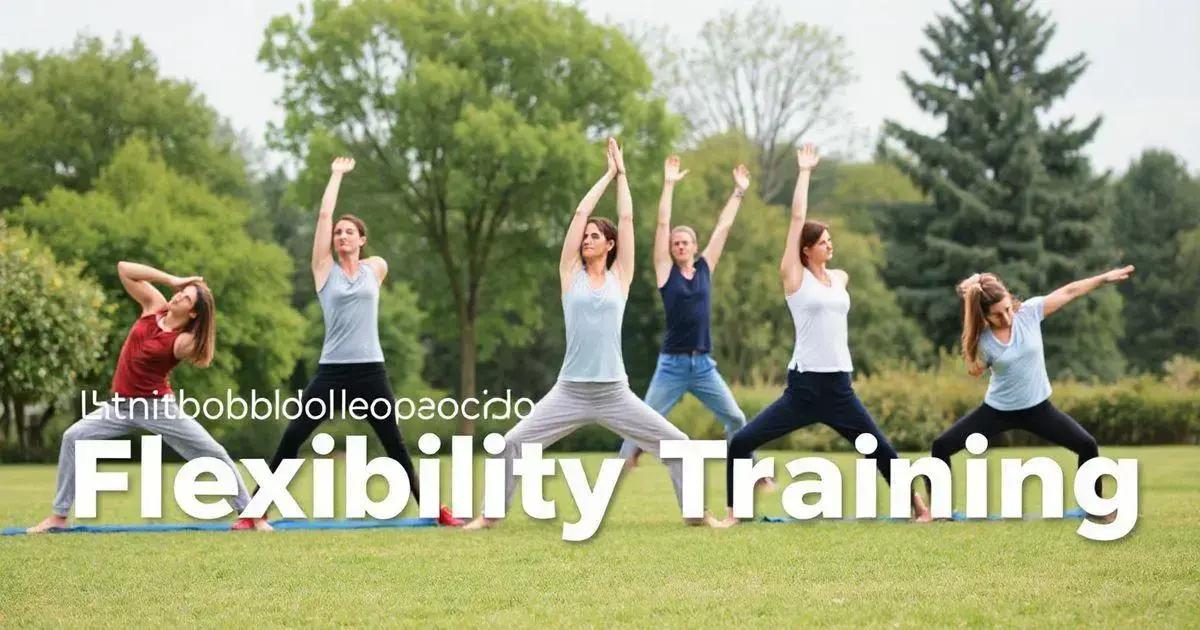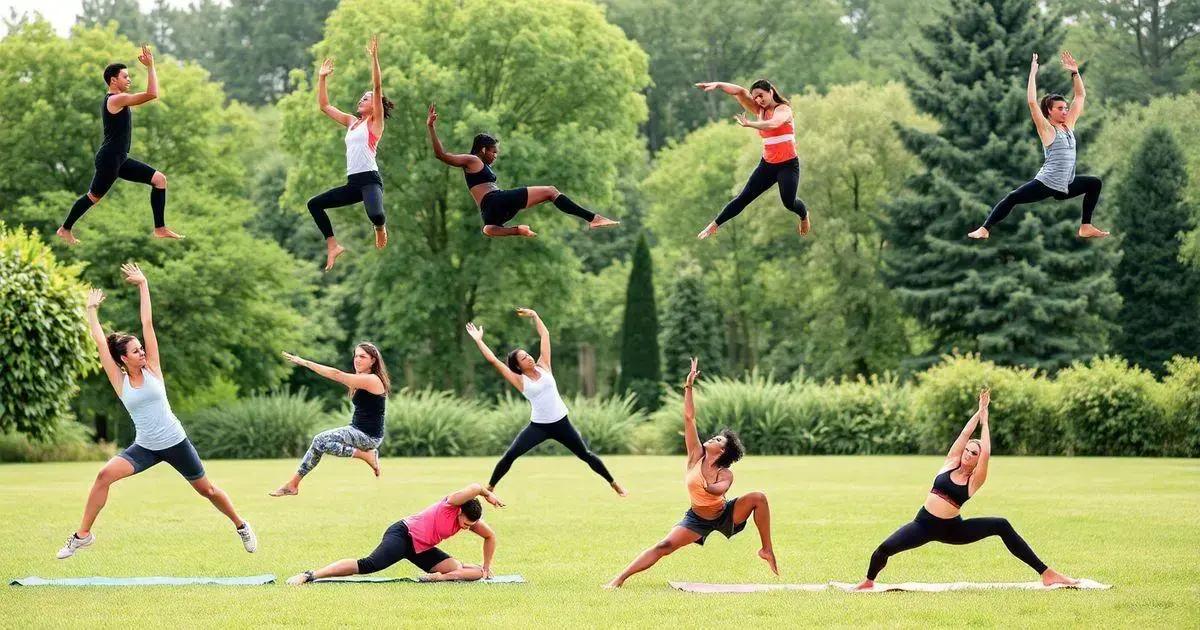To incorporate flexibility training into your routine effectively, focus on improving your range of motion through techniques like dynamic and static stretching, yoga, and Pilates. Aim for consistency by creating a balanced schedule that includes flexibility sessions at least two to three times a week, integrating exercises into your existing workouts, and staying motivated with enjoyable activities.
Incorporating flexibility training into your routine is essential for enhancing mobility and reducing the risk of injuries. Whether you are an athlete or a fitness enthusiast, flexibility exercises can significantly improve your overall performance. In this article, we will explore the various aspects of flexibility training, its benefits, and how to seamlessly integrate flexibility practices into your daily workout regimen.
Understanding Flexibility Training

Flexibility training is a vital component of physical fitness that focuses on improving the range of motion in muscles and joints. It plays a crucial role in enhancing overall body performance, preventing injuries, and facilitating recovery. By incorporating flexibility training into your fitness routine, you can experience improved athletic performance and reduce muscle tension.
What is Flexibility Training?
Flexibility training refers to exercises that stretch your muscles and may improve your range of motion. This type of training can involve static stretching, where you hold a stretch for a period, or dynamic stretching, which involves moving while you stretch. Flexibility is essential because it allows the body to move more freely and can help improve posture and balance.
The Importance of Flexibility
Many people overlook flexibility training, but it has numerous benefits that contribute to your overall health. Increased flexibility can enhance your performance in physical activities by allowing you to perform movements more efficiently. Moreover, it helps reduce the risk of injuries by preparing your muscles and joints for physical exertion.
Additionally, flexibility training can alleviate tension and stiffness, which can be beneficial if you sit for long periods or engage in repetitive activities. Regular practice of flexibility exercises can lead to long-term benefits, including improved circulation and reduced muscle soreness.
Incorporating Flexibility Into Your Routine
To effectively incorporate flexibility training into your routine, consider setting aside dedicated time each week. Whether through yoga, Pilates, or stretching classes, finding activities that promote flexibility is essential. Aim for at least 10 to 15 minutes of stretching after your workouts or during your rest days to maximize the benefits.
If you’re new to flexibility training, it’s helpful to start slowly and gradually increase the intensity of your stretches. Listen to your body and avoid pushing yourself too hard to prevent injury. Aim for consistency rather than extreme flexibility to see improvements over time.
Benefits of Flexibility in Your Routine

The benefits of incorporating flexibility training into your routine are numerous and impactful. These benefits extend to both physical and mental health, making flexibility exercises a vital addition to any fitness plan.
Improved Range of Motion
One of the primary benefits of flexibility training is an enhanced range of motion in your joints. This improvement allows you to move more freely and effectively, which is essential in performing daily tasks and engaging in physical activities. Activities such as bending, lifting, and reaching become easier, which contributes to a more active lifestyle.
Reduced Risk of Injuries
Flexibility training can significantly lower your risk of injuries. By maintaining flexible muscles and joints, you are less likely to strain or pull muscles during physical activity. Regular stretching prepares your body for movement and helps to cushion your joints, reducing the likelihood of acute injuries.
Enhanced Athletic Performance
For athletes, integrating flexibility into your training can lead to improved performance. Flexible muscles can produce more power and speed, enhancing your overall athletic capabilities. With increased flexibility, movements become smoother, and you’ll find you can execute skills more accurately and efficiently.
Relief from Muscle Tension
Flexibility training also helps in relieving muscle tension and soreness. Stretching after workouts encourages blood flow to sore muscles, aiding recovery and reducing next-day stiffness. Additionally, it helps to create a sense of relaxation, promoting mental well-being.
Improved Posture and Alignment
Incorporating flexibility exercises can correct posture and alignment issues. Tight muscles can cause improper alignment, leading to discomfort and chronic pain. Stretching strengthens the muscles responsible for maintaining good posture and helps redistribute pressure evenly across your body.
Techniques to Add Flexibility Exercises

Incorporating flexibility exercises into your routine can be straightforward and enjoyable. Here are some effective techniques to help you add flexibility training:
Dynamic Stretching
Dynamic stretching involves moving parts of your body through full ranges of motion. This technique is excellent for warming up before a workout. Examples include leg swings, arm circles, and torso twists. Aim to perform dynamic stretches for about 5 to 10 minutes at the beginning of your exercise regimen.
Static Stretching
Static stretching entails holding a stretch for a specific period, usually 15 to 60 seconds. This technique is best performed after workouts when your muscles are warm. Focus on major muscle groups, including hamstrings, quadriceps, and shoulders. Ensure you breathe deeply and relax into each stretch for maximum benefit.
Yoga and Pilates
Participating in yoga or Pilates classes can significantly enhance your flexibility. Both practices focus on stretching, breathing, and body awareness. They offer various poses and movements that improve flexibility, strength, and coordination. You can find classes at gyms or online resources tailored to all skill levels.
Foam Rolling
Foam rolling is a self-myofascial release technique that helps relieve muscle tightness and improve flexibility. Use a foam roller on major muscle groups, such as the back, legs, and arms. Roll slowly over tight areas and pause for a few seconds to help release tension.
Incorporate Flexibility Into Daily Life
Look for opportunities to stretch throughout your day. Simple techniques, like reaching your arms overhead while standing or stretching during breaks at work, can help promote flexibility. Setting reminders or following a routine can keep flexibility training consistent and achievable.
Creating a Balanced Flexibility Schedule

Creating a balanced flexibility schedule is essential for maximizing the benefits of flexibility training. Here are some strategies to help you design a schedule that works for you.
Assess Your Current Activity Level
Start by evaluating your current fitness routine. Determine how much time you spend on strength training, cardio, and flexibility exercises each week. This assessment will guide you in balancing your flexibility training with your other activities.
Set Specific Goals
Establish clear goals for your flexibility training. Decide which muscle groups you want to focus on and how often you want to stretch each week. Aiming for at least two to three flexibility sessions per week can enhance your progress.
Incorporate Flexibility Training into Workouts
Integrate flexibility exercises into your existing workout routine. Dedicate time before and after your main workouts for warm-ups and cool-downs that include stretching. This approach not only saves time but also ensures that your muscles remain flexible.
Create a Weekly Schedule
Design a week-by-week schedule that incorporates flexibility exercises. It can help to dedicate specific days to stretch major muscle groups. For example, you could focus on upper body stretching on Mondays and lower body on Thursdays. Consistency is key.
Listen to Your Body
Pay attention to how your body responds to your flexibility training. Adjust your schedule based on how you feel. If you experience soreness or tightness, you may need to increase the frequency of your stretches or include more recovery days.
Stay Motivated
To maintain your flexibility training schedule, find ways to keep it enjoyable. You could join a class, find a workout partner, or follow online routines. Keeping variety in your flexibility practice will help you stay engaged and consistent.
Incorporating Flexibility Training into Your Routine
Incorporating flexibility training into your routine offers numerous benefits, from improved range of motion to reduced injury risk. Understanding the various techniques and establishing a balanced schedule will help you achieve the best results.
By integrating different stretching methods, like dynamic and static stretches, along with practices like yoga and Pilates, you can enhance your overall fitness. Remember to assess your activity level and set specific goals to ensure consistency in your flexibility training.
Staying motivated is key to making flexibility training a lasting part of your routine. Whether it’s through classes, workout partners, or personal goals, maintaining engagement will lead to long-term success.
Ultimately, prioritizing flexibility will enhance your overall health and well-being, allowing you to thrive both physically and mentally.
FAQ – Frequently Asked Questions about Incorporating Flexibility Training
What are the benefits of flexibility training?
Flexibility training improves your range of motion, reduces the risk of injuries, enhances athletic performance, and helps relieve muscle tension.
How often should I practice flexibility exercises?
Aim to practice flexibility exercises at least two to three times a week to maximize benefits and maintain your range of motion.
What techniques can I use for flexibility training?
Techniques include static stretching, dynamic stretching, yoga, Pilates, and foam rolling, each contributing uniquely to your flexibility.
Can I include flexibility training in my current workout routine?
Yes, you can easily integrate flexibility exercises into your existing workouts by adding warm-ups and cool-downs focused on stretching.
How can I stay motivated to keep my flexibility training going?
Find activities you enjoy, set specific goals, join classes, or work out with friends to maintain interest and motivation.
What should I consider when creating a flexibility schedule?
Assess your current activity level, set specific flexibility goals, and designate specific days for different muscle groups in your training.












